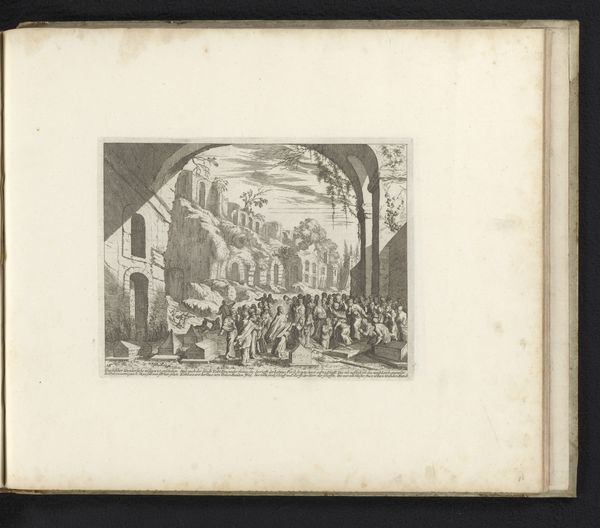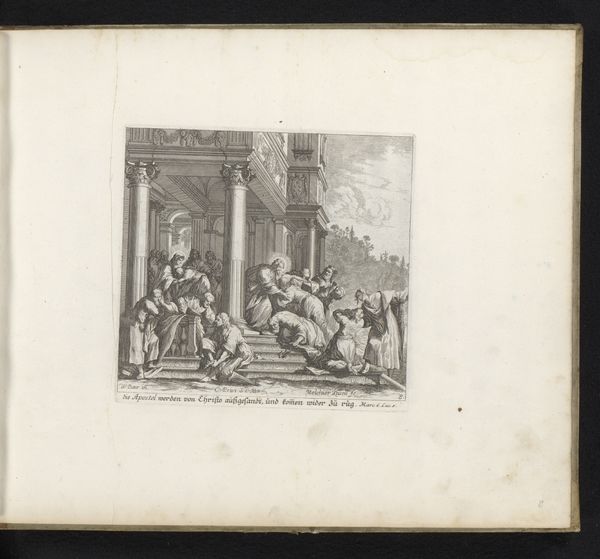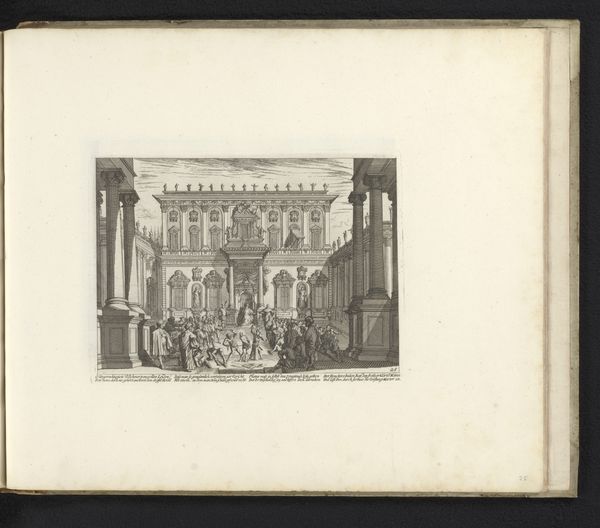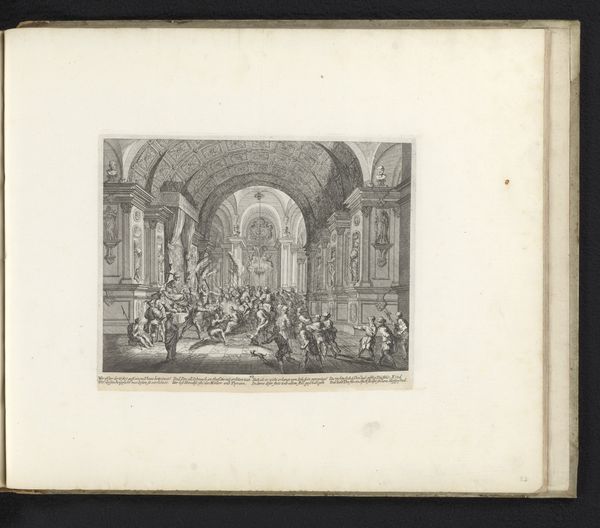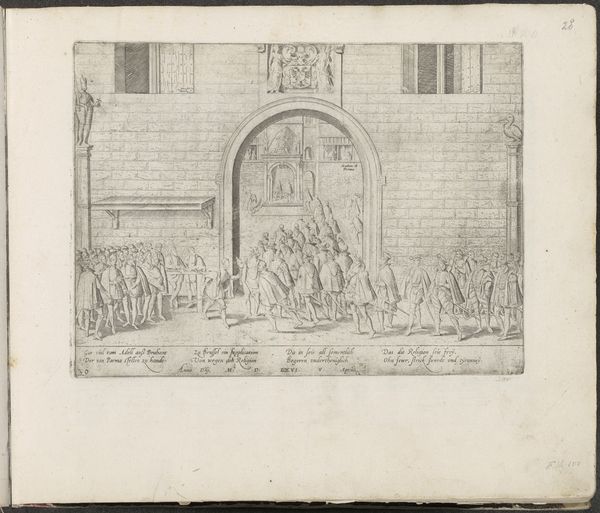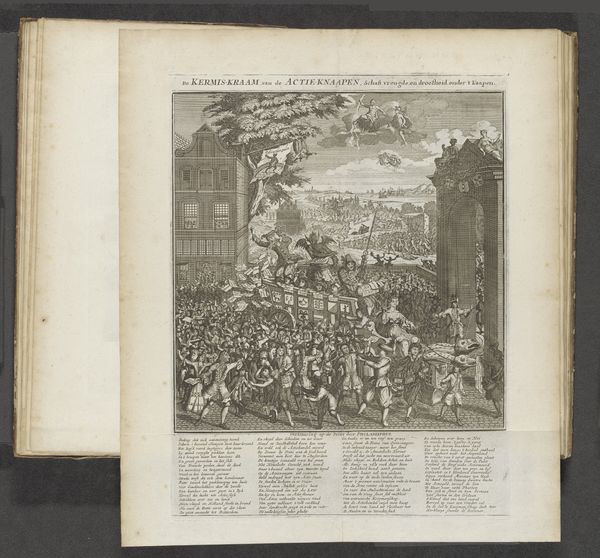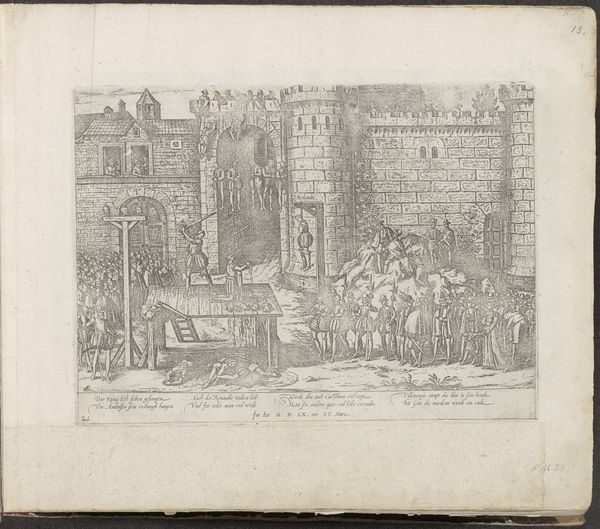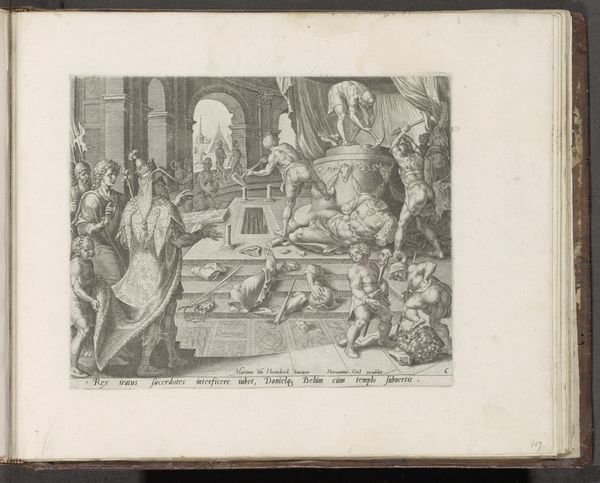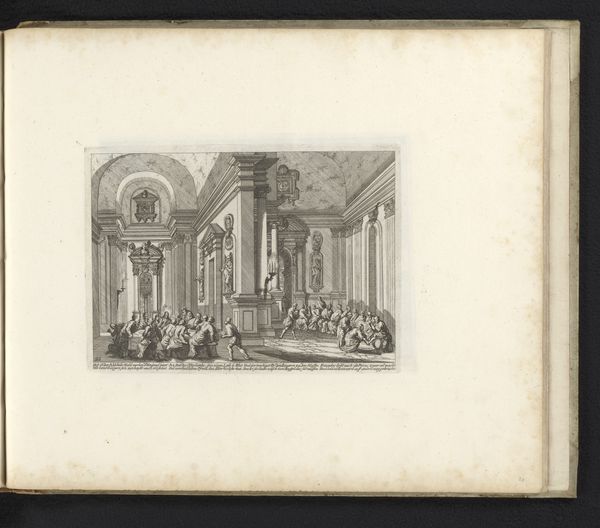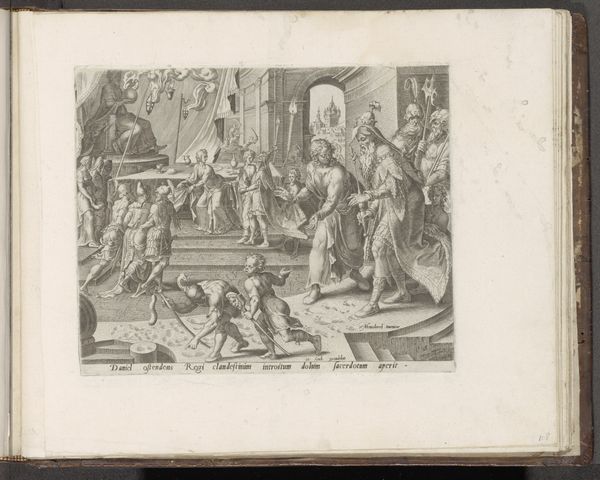
print, engraving
#
baroque
# print
#
line
#
cityscape
#
history-painting
#
engraving
Dimensions: height 158 mm, width 207 mm
Copyright: Rijks Museum: Open Domain
Curator: Looking at this print by Melchior Küsel, made sometime between 1670 and 1682, I'm immediately struck by the swirling chaos depicted. Editor: Chaos is definitely the word! The mood is somber but with bursts of fevered activity. I'm drawn to the sheer quantity of tiny figures. How does this "Kruisdraging"—"Carrying of the Cross"—fit within the landscape around it? Curator: The city teems! Küsel's line engraving situates this iconic religious event in a plausible, though obviously idealized, urban environment. Note how classical architecture is seamlessly merged into a cityscape teeming with people. This choice perhaps humanizes the divine drama. Editor: Right, the materiality of those lines almost feels democratic, an attempt to represent an entire city, its collective labor made visible even in moments of immense suffering. You know, it does make me think about the copperplate itself – the intense work of the engraver. Did Küsel do this engraving himself? Curator: As far as scholars can tell, yes, he almost certainly did. It is difficult to know exactly what compelled Küsel to spend countless hours incising lines. What thoughts went through his head as he crafted this intense drama out of lines? This image makes me consider how suffering is often an integral part of spiritual and aesthetic experience. Editor: The sheer production time—conceiving the composition, transferring it, the meticulous cutting of the lines—creates an object imbued with so much time and care, almost as an act of… well, devotion perhaps. Think about the social implications as well; the cost, and accessibility of prints such as these would vary. The work could function almost as an artifact of class status. Curator: An artifact infused with a spiritual message. I can imagine this print circulating through a diverse public sphere, where its meaning could be debated, transformed, internalized by its many audiences. The way Küsel combined faith, history and social commentary into such a concentrated medium still has a way of affecting us. Editor: Exactly. Examining Küsel's “Kruisdraging” makes us more acutely aware of the web of physical work, class, and the enduring presence of history throughout it all. I appreciate how it lets us reflect not just on faith but also the processes that create our cultural artifacts.
Comments
No comments
Be the first to comment and join the conversation on the ultimate creative platform.
